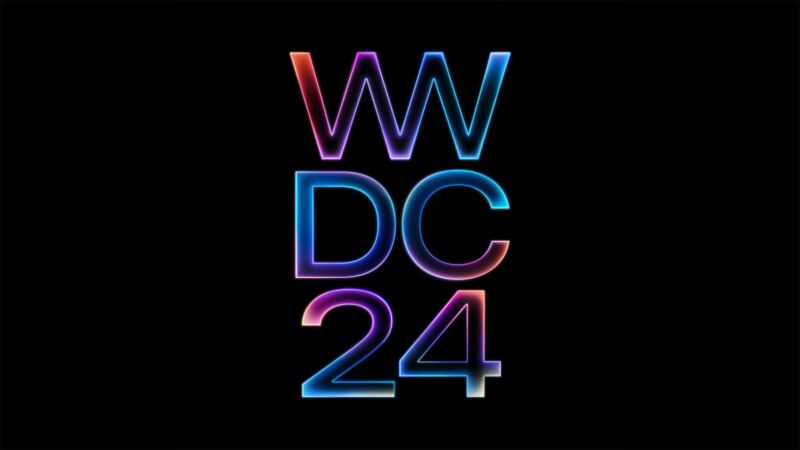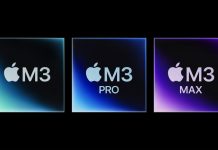There might not be new hardware, but Apple could make up for it with software.

Apple’s annual developer conference, WWDC, kicks off in Cupertino, California, next week. As always, it will start with a livestream keynote on Monday morning at 10 am Pacific, 1 pm Eastern. We’ll be in attendance reporting on the event, so let’s take a moment to take stock of what we expect to see next week.
WWDC 2024 starts on June 10 with announcements about iOS 18 and beyond
But first, let’s note something we don’t think we’ll see: Due to some peculiarities about Apple’s upgrade cycles, as well as a push toward the M4, we’re not actually expecting any major hardware announcements at WWDC this year.
That’s OK, though, because it looks like it’s going to be a big one for software news. iOS has seen relatively modest updates in the past couple of years, but that’s about to change.
AI in the spotlight
Most of the rumors leading up to WWDC have been about Apple making plans to announce tons of generative AI features for its platforms. Part of that is because AI is the hot topic right now, so anything about that is bound to get some coverage. However, according to leaks reported by Bloomberg, The Information, and others, it looks like Apple is going to make a conscious effort to reposition itself as a leader in AI.
Apple was already doing neat things with machine learning in iOS and elsewhere, like features that make image editing easier, smart recommendations, and more. But there have been major new developments in models lately that allow for many new options, as we’ve seen from others like OpenAI, Google, and Microsoft.
Report: Apple and OpenAI have signed a deal to partner on AI
We don’t know many details about exactly what Apple will do here beyond it being a focus. The company has published several papers related to new large-language model chatbots, major Siri improvements, image generation, and more, but it’s hard to tell what will become user-facing features.
Possibilities include auto-generated summaries in apps like Mail, new ways to block ads or interact with websites in Safari, GitHub Copilot-like code editing assistance in Xcode, clip art generation for iWork documents, more conversational and larger-scope answers from Siri, new image editing features, expanded accessibility features, new transcription capabilities, and more.Advertisement
Apple has reportedly been in talks with companies like OpenAI and Google (it even sounds like a deal has already been reached with OpenAI) about augmenting Siri and other parts of the iOS or macOS experience with an external AI chatbot. Apple has reportedly experimented with its own chatbot, but it’s unlikely that one would be far enough along to be a strong alternative to the likes of ChatGPT. At a minimum, expect Apple to partner with at least one company (probably OpenAI) as a provider for out-of-scope answers to queries asked of Siri or in Spotlight.
There have been rumblings that Apple could offer users a choice of multiple AI providers or launch an AI App Store, but we don’t know for sure how it will all take shape.
iOS and iPadOS 18
iOS 18 (and its close sibling, iPadOS 18) will roll out later this year alongside new iPhones, likely in September or October. But WWDC is the first time we’ll get a look at the major features Apple has planned.
Typically, Apple announces most new iOS features during the upcoming keynote, but it might save a couple that are related to as-yet unannounced iPhone hardware for later.
The rumor mill this year points to an overhaul of both Control Center and Settings, plus the aforementioned inclusion of numerous new machine learning, LLM, or image -generation features. One rumored example of how AI could be used in iOS described a new home screen that allows users to quickly recolor app icons to create a consistent color palette across their phone. Apple might even allow users to place icons wherever they want, addressing the irritating “wobble mode” home screen management that we’ve criticized in our iOS reviews for years.
Expect big new features for Messages, too, like new text effects and formatting options. There’s also a strong possibility that Apple will go into detail about RCS support in iOS. Generative AI could allow users to create custom emojis or stickers, too.
There were also a few rumors that Apple will make some visual changes to iOS, borrowing a bit from the visual language we saw in visionOS this spring.
Oh, and one more thing: iPadOS is finally getting a calculator app. We’re not sure why that took so long, but there it is.
ARS VIDEO
How Scientists Respond to Science Deniers
visionOS 2
We’re only a few months into the life of visionOS and Apple’s first “spatial computing” headset, the Vision Pro. Nonetheless, it seems likely that Apple will take at least a little bit of time to talk about improvements and new announcements in this space.
First up, all signs point to an international launch for Vision Pro. It released in the US earlier this year, but demand for the pricey headset seems to be tapering off here, and other regions haven’t had access yet.
I’ve written many times before that I see the Vision Pro as a developer tool more than a mainstream consumer product. Apple is trying to stir developer interest so that when devices more suitable for mass production and adoption arrive, there’s plenty of software ready to go. Launching the headset outside the US is key for that, both to get it into the hands of more developers and to give them a larger user base to sell their apps to.
As for the operating system, Bloomberg’s Mark Gurman has reported on a few things we can expect. They include more native apps from Apple. When the Vision Pro launched, several of Apple’s own apps like Maps or Notes were essentially just the iPad versions running as spatial windows, even as some others like TV had special versions of the headset. I doubt Apple will fully complete the conversion, but there will almost certainly be several new native apps with new features specifically designed for the Vision Pro.
There may also be some quality-of-life improvements, like the ability to move apps around in visionOS’s homescreen, and some major accessibility features like real-time captions or even translations of what people are saying either in your vicinity or in online video.
Content has been sparse for visionOS since launch, with only a few immersive videos available and a limited variety of true mixed -reality games. There will probably be a couple of updates on this front, too.
macOS 15
macOS is the backbone of Apple’s entire ecosystem, but as usual, we know a lot less about what to expect from it than we do iOS. It typically gets fewer major new features these days, presumably because Apple feels it’s largely in a good place. (For what it’s worth, I do, too.)
Expect some of the same LLM or generative AI-related features that iOS will get, albeit exclusive to Macs with recent chips. That almost certainly will include additional capabilities for Siri and Copilot-like programming assistance in Xcode.
As with iOS, yet another overhaul of the Settings app is a strong possibility, and there will be various updates to built-in apps to match similar additions on the mobile side.
Apple has been steadily expanding the options for game developers for the Mac and other Apple platforms, with additions like hardware-enabled ray-tracing, AI upscaling, and much more robust tools for porting games from Windows. There will probably be more announcements in that area at WWDC this year, not just for macOS but also for iOS, iPadOS, visionOS, and tvOS.
watchOS, tvOS, and beyond
As with macOS, we know a bit less about what to expect from Apple’s other platforms like watchOS or tvOS. They’re likely to see relatively minor changes or additions. Typically, new watchOS updates come with some more watch faces and additional workouts. More substantial changes like new health tracking features often get announced alongside new hardware in the fall. We don’t know anything at all about what to expect from tvOS or Apple’s HomePod or AirPods software and firmware.
Sometimes, Apple uses WWDC to discuss additions to its services like iCloud, TV+, or Music, so there could be some developments in those areas.
Beyond the keynote
As usual, the keynote presentation will be followed by a “Platforms State of the Union” talk that goes into greater depth for the conference’s developer audience. Think of the keynote as the top-level view focused a bit more on the user’s perspective, while the state of the union session gets into the nitty-gritty for the people who will make software using the new features.
Numerous additional talks throughout the week will delve into specific APIs and features. Typically, these are not positioned for a user audience; they’re all about going into Xcode and actually implementing the new features.




